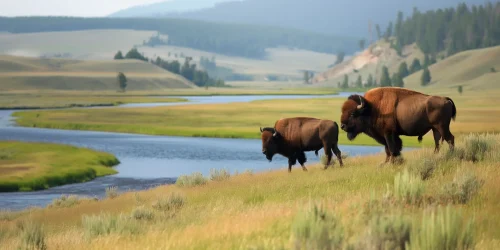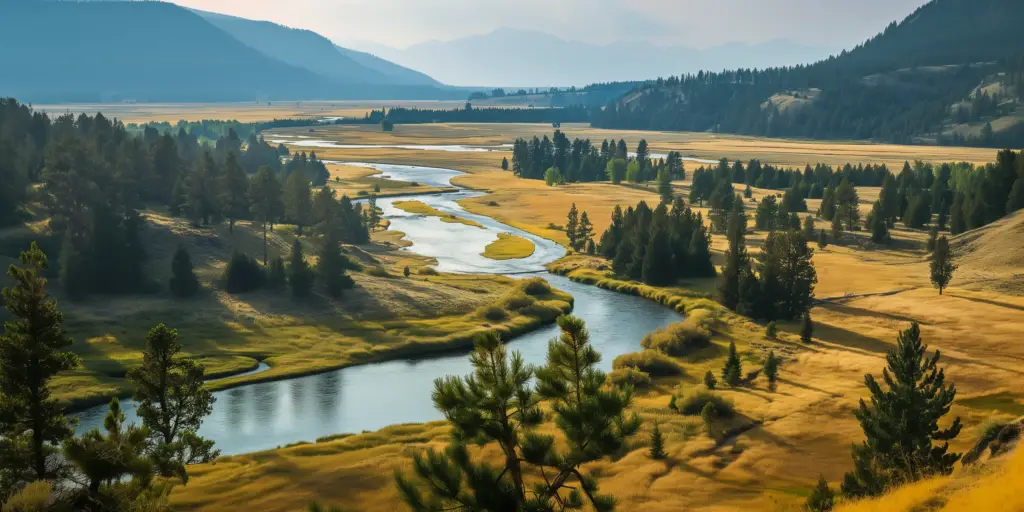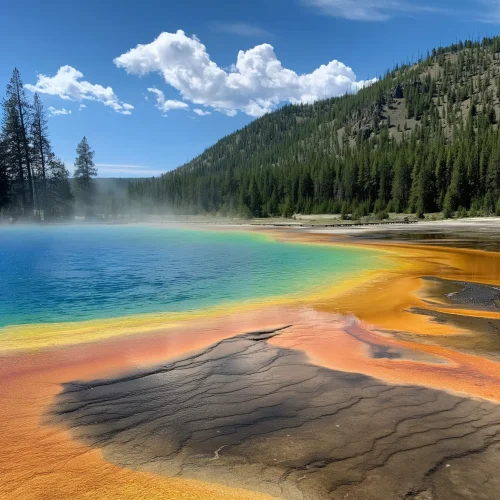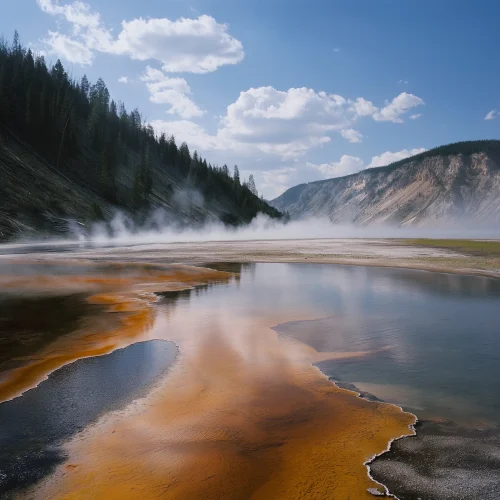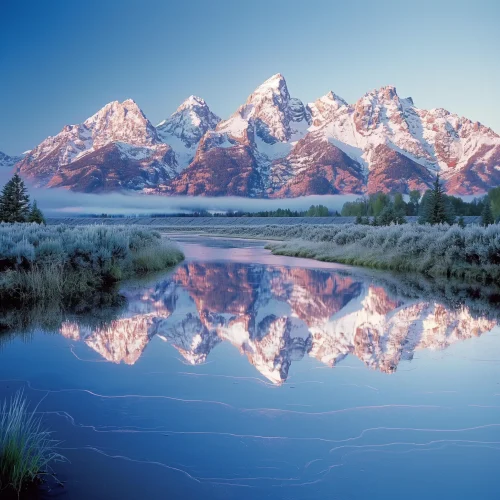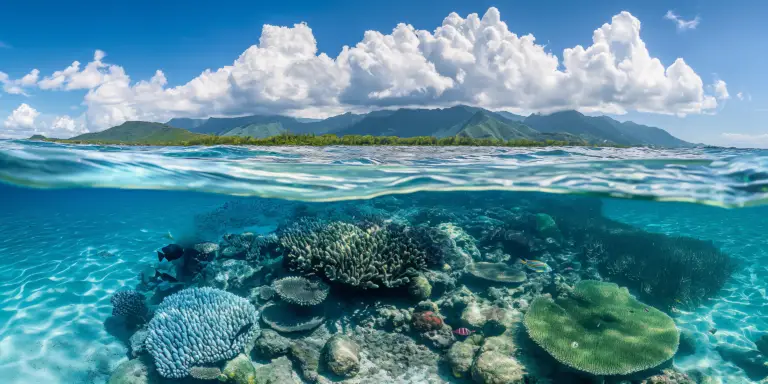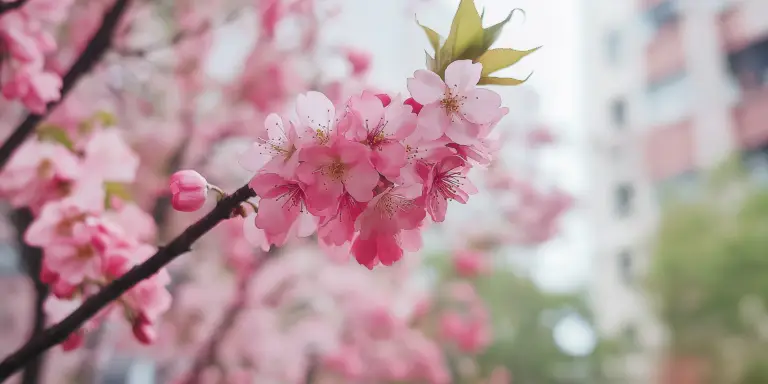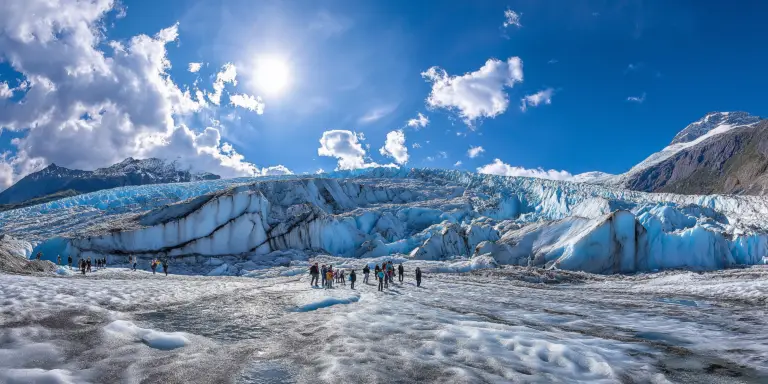Nestled in the rugged heart of the American West, Yellowstone National Park isn’t just the United States’ first national park—it’s a world unto itself. Spanning across Wyoming, Montana, and Idaho, this vast wilderness is a tapestry of geothermal wonders, sprawling landscapes, and diverse wildlife, making it a premier destination for adventurers and nature lovers alike. Here’s your essential guide to exploring this natural wonderland.
The Call of the Wild: Yellowstone’s Diverse Ecosystems
Yellowstone’s beauty lies in its variety. From the lush Lamar Valley, often called America’s Serengeti due to its large populations of bison, wolves, and grizzlies, to the mystic steam that rises from the Grand Prismatic Spring, each corner of Yellowstone tells a story millions of years in the making.
Geothermal Marvels: Yellowstone sits atop a volcanic hotspot, shaping much of the park’s unique geological features. The park is dotted with more than 10,000 hydrothermal features, including geysers, hot springs, mudpots, and fumaroles. The most famous of these is Old Faithful, a geyser that erupts like clockwork, sending boiling water up to 130 feet in the air every 90 minutes or so.
Grand Prismatic Spring: Another must-see is the Grand Prismatic Spring in the Midway Geyser Basin. It’s the park’s largest hot spring and the third largest in the world. This natural pool dazzles with its vivid colors, from deep blue waters at the center to bright oranges and greens produced by thermophilic bacteria on the edges. The colors change with the seasons and the varying temperatures of the water, making each visit uniquely beautiful.
The Grand Canyon of the Yellowstone: This breathtaking canyon is one of the park’s most iconic landmarks. The Yellowstone River has carved a path through the rock, creating dramatic cliffs and thunderous waterfalls. Artist Point is a popular spot offering panoramic views of the canyon and the Lower Falls, which plunge a stunning 308 feet.
Wildlife Watching: A Safari in the Rockies
Yellowstone is a sanctuary for many species, some of which are rarely found elsewhere in the U.S. Wildlife watching here can be as exciting as the landscapes are diverse.
Lamar Valley: For the best wildlife viewing, head to the Lamar Valley at dawn or dusk when animals are most active. Here, you can spot herds of bison, pronghorn antelope, and if you’re lucky, the elusive gray wolves. Bring binoculars or a spotting scope for a closer look, especially for spotting bears or catching a glimpse of a bald eagle soaring overhead.
Hayden Valley: Another hotspot for wildlife enthusiasts is Hayden Valley. Well-known for its large herds of bison and excellent birdwatching opportunities, this valley is also a great place to see herds of elk and occasionally, a grizzly bear wandering in the distance.
Hiking Yellowstone: Trails for Every Adventurer
With over 900 miles of trails, hiking is one of the best ways to explore Yellowstone. Whether you’re looking for a gentle stroll or a challenging backcountry adventure, there’s a trail that fits the bill.
Mammoth Hot Springs: Start with the boardwalk trails around Mammoth Hot Springs. These terraces form a cascading series of natural pools, created by limestone deposits from the hot springs. The trails here are mostly flat and offer close-up views of these otherworldly formations.
Mount Washburn: For those seeking a challenge, the hike to the summit of Mount Washburn is a rewarding endeavor. It’s a strenuous 6-mile round trip, but the panoramic views from the top encompass much of the park, including the Tetons on a clear day.
Uncle Tom’s Trail: If you’re ready for a workout, take Uncle Tom’s Trail, which leads you down a steep staircase to the base of the Lower Falls of the Yellowstone River. It’s a tough climb back up, but the view is worth every step.
Preserving the Wilderness: Responsible Tourism in Yellowstone
As we explore Yellowstone, it’s crucial to remember that this park is a protected area, home to countless species and delicate ecosystems. Practicing Leave No Trace principles ensures that the park remains unspoiled for future generations:
- Stay on designated trails and boardwalks. The park’s hydrothermal areas are fragile and dangerous.
- Keep wildlife wild. Maintain a safe distance from all animals to avoid disturbing them and putting yourself at risk.
- Pack out what you pack in. Leave areas better than you found them by carrying out your trash.
When to Visit
The best time to visit Yellowstone depends on what you want to see and do. The summer months are the most popular due to the warm weather and accessibility of most park features. However, visiting in the spring or fall can be equally rewarding, with fewer crowds and
